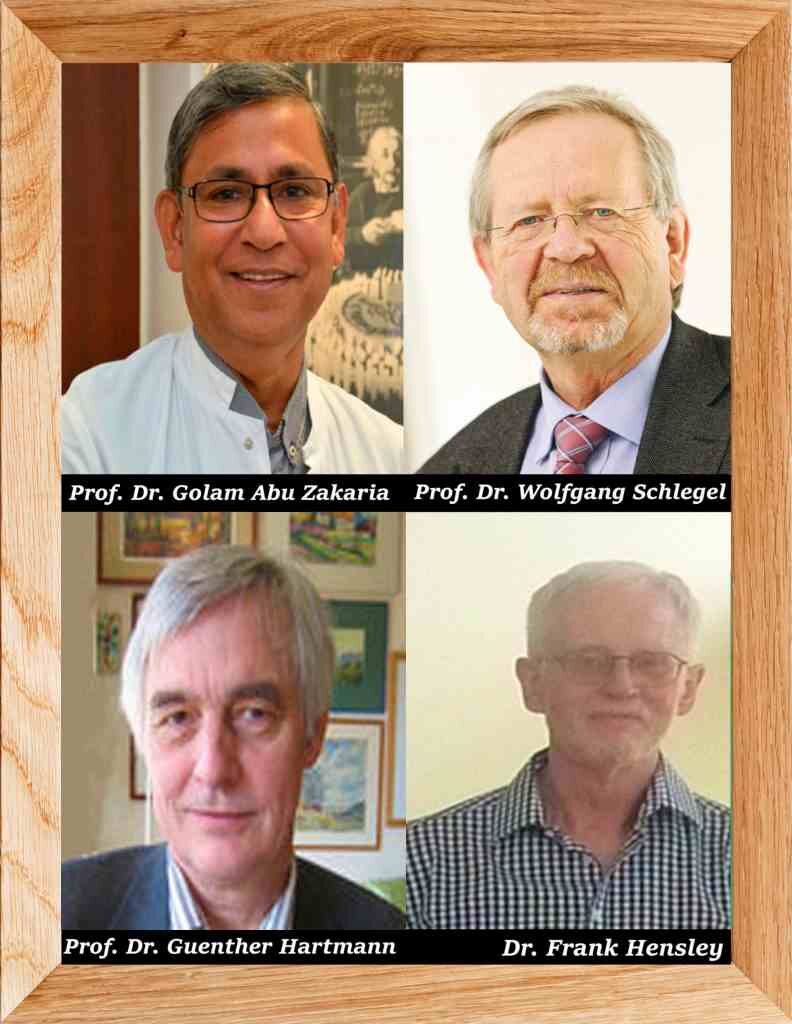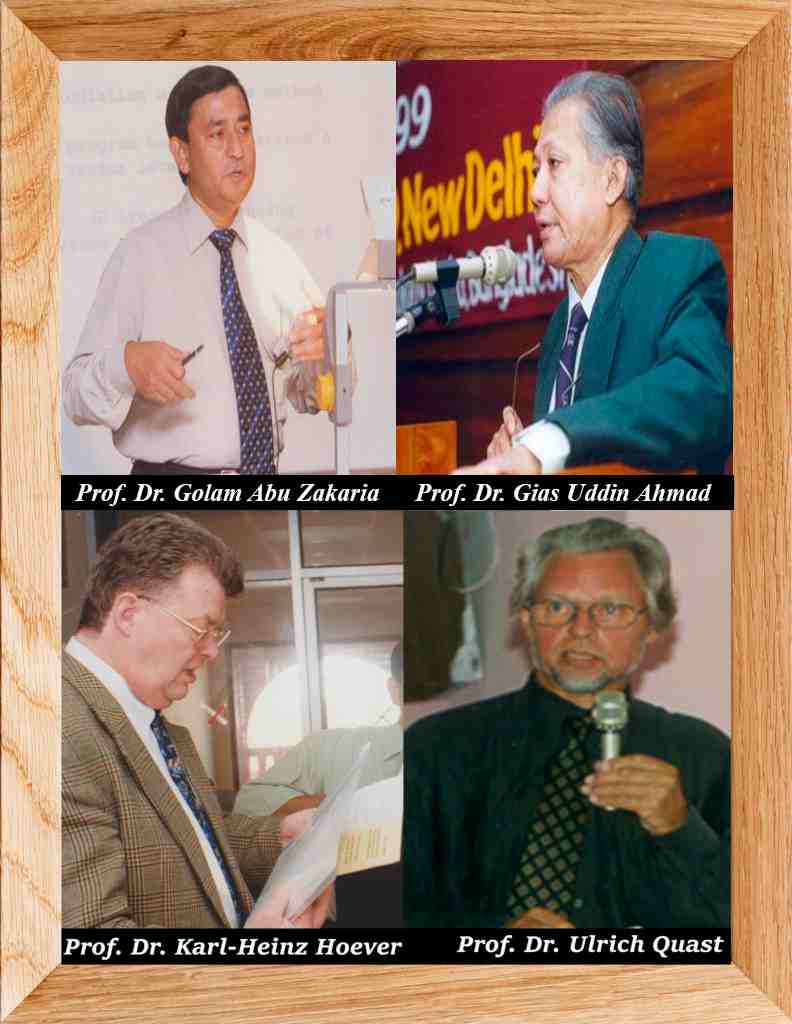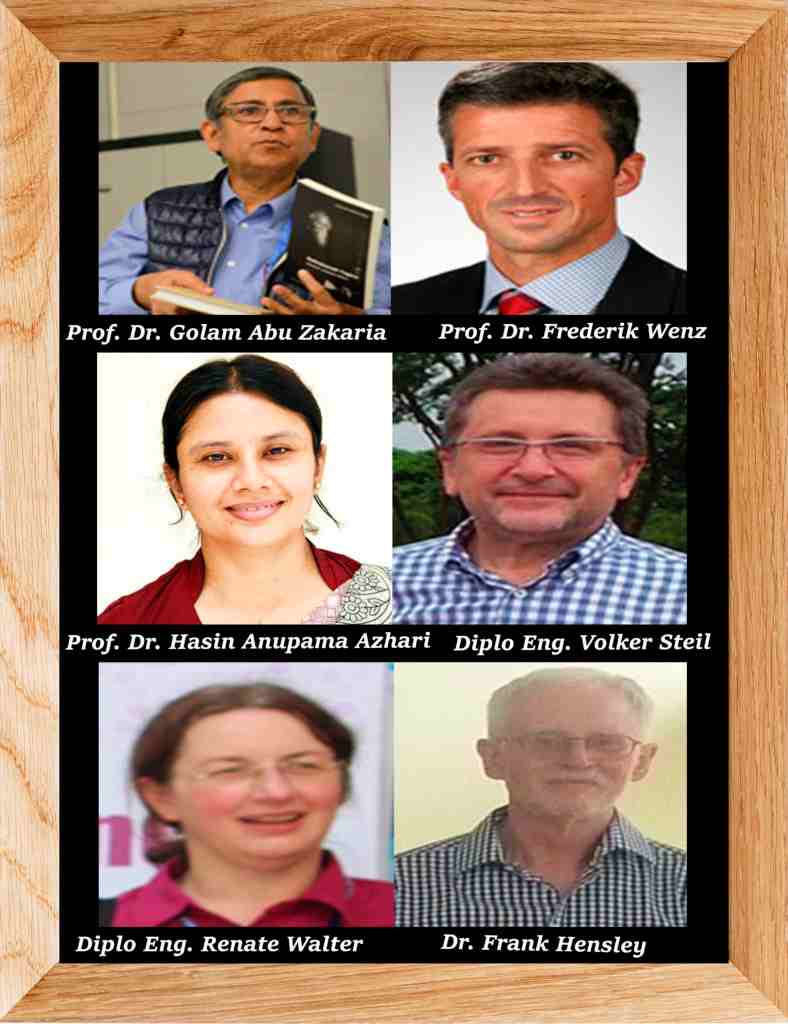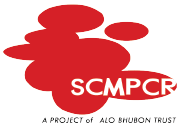History
The burden of cancer is increasing day by day at the alarming level all over the world as well as in Bangladesh. Radiotherapy is the most important, curative and cheapest modality for the treatment of cancer. Cancer will appear as epidemic not only in Bangladesh also in countries of South Asia region in the coming decades. Though in radiotherapy the number of radiation oncologists is somewhat sufficient in South Asia region including Bangladesh nevertheless medical physicists are quite new personal except India and almost nil in some countries like Bhutan.
Facing this situation, a considerable increase of new updated modern technologies as well as new departments are introducing in Bangladesh in radiology, radiotherapy and nuclear medicine area of the health sectors. The complexity in the radiation therapy treatment of this disease definitely requires more qualified medical physicists. Without medical physicist, radiotherapy treatment must not be practiced according to the rules of the International Atomic Energy Commission (IAEA); medical physicists work as a partner of radiation oncologist in a team for cancer treatment. The same rule is applicable in case of radiology and nuclear medicine sector.
According to the World Health Organization (WHO), 2 Teletherapy machines and 1 Brachytherapy machine are needed for 1 million population. At present, Bangladesh needs 160 radiotherapy facilities, 320 teletherapy and 160 brachytherapy machines to cover an optimal standard of radiotherapy treatment for 160 million people. This means that a minimum of 700 qualified medical physicists will be required to satisfy the demand in radiotherapy according to WHO standards and more if the need in diagnostic radiology departments is considered.
Presently, in Bangladesh, there are 16 radiotherapy departments of which external beam therapy is provided in 15 centres with 13 Co-60 radiotherapy machines and with 13 linear accelerators and 8 brachytherapy units. At present, there is only 150 radiation oncologist and 30 medical physicists are employed in different Radiotherapy departments.
Now the government is very aware of developing this manpower and creating more centres in district, upazila and union level. Very soon seventeen new centres will be established in these areas. This situation imposes an enormous challenge in the development of qualified medical physicist in Bangladesh which is a new era in BD.
Needless to say, to build up any new profession require successive planning like education, training, research on medical physics and so on. Prof. Golam Abu Zakaria, Chairman, and Chief Medical Physicist Dept. of Medical Radiation Physics Gummersbach Hospital of the Klinikum Oberberg Teaching Hospital of the University of Cologne Germany is the founder of medical Physics in Bangladesh, and a visionary leader for development of the quality treatment for the cancer patients in South Asia region including Bangladesh.
One of the significant pillars of cancer treatment – Medical physicists have already found its base in Bangladesh and India and reached a significant level in this area out of other South Asia regions. Considering the increasing need of manpower in this sector, an institute for higher study (M.Sc. and Ph.D.), clinical training or residency program for accreditation and certification is urgent necessary in this field. Otherwise modern and good treatment is not possible in the South Asia region and therefore more patients will go to abroad for cancer treatment.
MP Education and Training in Bangladesh
Before the nineties, there was no education in MP. A Bangladeshi born medical physicist residing in Germany has established medical physics education in Bangladesh. The first activities of Medical Physics education started in 1994 at the Physics Department of the Bangladesh University of Engineering and Technology (BUET). Prof. Golam Abu Zakaria, Germany is the patron of this German collaboration since the nineties, founder of medical Physics in Bangladesh has a keen interest for the accurate and precise treatment of cancer patients in South Asia region.
In 1996, cooperation in education and training of Medical Physics between Bangladesh and Germany was started by the Task Group 16 “Medical Physics in the Developing Countries” of the German Society for Medical Physics (DGMP). Five seminars/workshops were organized in Bangladesh in the years 1996, 1997, 1998, 1999 and 2000 training 70-80 participants per year (physicists and radio-oncologists). The main issue of these seminars was to inform and to motivate the physicists to become medical physicists. Around the same time, in 2000 the “Department of Medical Physics and Biomedical Engineering” was founded at Gono Bishwabidyalay (a private university) in Savar, Dhaka. The foundation of education was implemented through the collaboration program between Gono University and Heidelberg University along with the cooperation of the German Cancer Research Centre (DKFZ) between 2002 and 2006, granted by the German Exchange Service (DAAD). Prof. Wolfgang Schlegel and Prof. Josef Bille were the other main promoters of this cooperation on the German side. Prof. Guenther Hartmann used to travel to the Medical Physics department from DKFZ. His constant dedication to the development of the Medical Physics department has been truly remarkable. He has taken a variety of subjects, oversaw theses, and served as a great resource for the staff and students. The department has been significantly shaped by his achievements, and his legacy will definitely continue to motivate future generations of medical physicists.
Education and training were the primary objectives of this collaboration. It should be mentioned that this was the first attempt to establish Master courses of international standard in Medical Physics and in Biomedical Engineering, up to now this is the only full-fledged department of Medical Physics in Bangladesh.
Finally, Prof. Zakaria had become successful to establish such a Department in Gono University “Department of Medical Physics and Biomedical Engineering (MPBME)” in 2000 which was the result of enormous discussions with the experts from the different public and private universities and authorities of University Grant Commission (UGC). The syllabus of these courses is based on the documents of DGMP, AAPM, and IAEA that covers all important aspects of medical physics according to the need of Bangladesh. Now there are around 350 students in this department (2018). Students from Nepal are also studying here;
Since the inception of the department, Germany plays an important role for the development of the faculty members; arranging class lectures, practical by the experts; delivery of books, equipment, teacher-student exchange through the collaboration financed by DAAD. Only for this MPBME can able to provide quality education as an international standard in medical physics. From 2001 till 2018 approximately 70 personal including Radiation oncologists, Medical physicists, Academicians have been undergone this program. Later the collaboration has also extended in China and India. Most of the medical physicists are working almost in all the government and nongovernment hospitals in Bangladesh.
At present about 55 medical physicists having MSc degree from Gono and other universities, most of them are trained in Germany under his supervision who is working now in different hospitals in Bangladesh. In 2009 through establishment of a society Bangladesh Medical Physics Society (BMPS) the MP community have been able to establish the strong relationship with other professional societies such as Bangladesh Physical Society (BPS), Bangladesh Cancer Society (BCS), Bangladesh Society of Radiation Oncologists (BSRO), Bangladesh Society of Radiology and Imaging (BSRI), Bangladesh Atomic Energy Commission (BAEC), Bangladesh Atomic Energy Regulatory Authority (BAERA) etc. Since then BMPS is jointly organizing awareness programmes, seminars, national and international conferences in cooperation with the department. The remarkable achievement of BMPS is it has been able to make the government understand the role of MP in cancer treatment and thereby the Directorate of General Health Service and ministry of Health establish unified recruitment rules and positions for the medical physicists in Bangladesh.
Background for SCMPCR
The scenario of cancer and its treatment in most of the South Asia region is not up to the mark due to lack of proper education in medical physics and training facilities and absence of accredited hospitals for the residency program. The South Asia region with its eight countries (Afghanistan, Bangladesh, Bhutan, India, Maldives, Nepal, Pakistan, and Sri Lanka) has approximately one-fourth of the worlds and 40% of Asia’s population. This region is presently experiencing a shift in infectious disease to an increasing incidence of non-communicable diseases like cardiovascular and cancer. South Asian countries face a big challenge in all four key components of cancer control such as prevention, early detection, diagnosis, and treatment. With respect to the global context, about 24.59% populations are present in South Asia area where the incidence of new cases is 10.23 % and the burden of cancer death is 68.85%. This well-known fact indicates that this region of the world requires improving strategies in cancer management. SAARC countries contribute a burden of 91.10% of incidence and 90.93% 5-year prevalence, and 90.56% of cancer deaths. Hence, importance of focusing on oncology in SAARC countries cannot be over-emphasized
However, in most of the countries in South Asia region still do not have enough Qualified Medical Physicists (QMP) and biomedical engineers (completed a residency program with clinical training) to run the established centres equipped with Modern technologies machines.
In the year of 2011, 2014, 2018 International conferences titled “international conference on Medical Physics in Radiation Oncology and imaging (lCMPROI)” organized by BMPS every three years interval a considerable number of foreign participants especially from South Asia region had attended. Prof Zakaria raised an important issue in the conference to set up a common forum of medical physicists in the south Asia region, which was supported by the participants from Bangladesh, India, Nepal, and Pakistan. Prof. Zakaria’s vision and dreams to make strong regional cooperation among the medical physicists of the South Asian countries because of their geographical positions, similar cultures identities sharing a common love of chai, curry, cricket and Bollywood, common heritage and most importantly the similar oncology profiles with some regional differences.
Through the formation of a common forum, the ultimate goal of this region could be achieved by sharing clinical observations, educational materials, research findings and organizing scientific events. Notably, this forum would accelerate and facilitate the accreditation and certification process of becoming the qualified medical physicist. The attendees in the meeting appreciated the idea of forming a common platform of medical physicists in this region and proposed the name of South Asian Federation of organizations for Medical Physics (SAFOMP).
Also, each day the radiation therapy technology is changing to provide maximum dose to the tumor and minimum dose to normal tissue. The whole team of radiotherapy must be acquainted with the upcoming updated technology and this is a continuous process. So the training of the manpower is an obligatory part of cancer health care. This is not only applicable in Bangladesh but also in South Asian countries. However also in radiology and nuclear medicine modern updated equipment needs good maintenances high-quality control. it is practical field so personnel having B.Sc., M.Sc. and/or a Ph.D. degree in medical physics need professional certification to work in the hospital. As per international rules residency program/Training is mandatory for professional certification after MSc to become QMP (Qualified medical Physicist). At present, there is a scarcity of qualified trainer in the developing world for the training of a new person in health sector. On the other hand, due to shortage of qualified teacher, it is quite difficult to run this subject. One, two or no educational institutes are able in different countries in South Asia region to run this course.
Considering the urgent need of qualified manpower in these treatment sectors, a specially designed institute will overcome the current problem of scarcity of Qualified Medical Physicist (QMP). This institute has to fulfill the demand to offer higher study (MSc and Ph.D.) in this field as well as clinical training or a residency program for accreditation and certification for the South Asia (SA) region. Otherwise modern and good treatment cannot really be achieved in SA including Bangladesh resulting the patients will go abroad in the developed countries for cancer treatment if they can afford in their home country. However poor patients will be deprived of the treatment as they do not have enough money for going abroad. In case of Bangladesh and other countries in the SA regions, many students achieving BSc or MSc degree in medical physics do not have an opportunity to get their residency or clinical training in their field within the country. So they are heading towards other countries with a considerable risk of brain drain. There are many students in the field of physics, medicine, engineering and other applied sciences background who are also interested to pursue their higher education in this field.
From his experience in this field for more than 40 years in Germany and approximately 30 years in Bangladesh and other developing countries, he thinks Bangladesh must need an Institute for higher education especially for the residency program, the Ph. D. degree and the training for medical physicists, medical doctors, engineers, technician, and all cancer treatment-related professionals.
South Asia Centre for Medical Physics and Cancer Research (SCMPCR) established in 3rd July 2018, is comprised of a group of philanthropic personnel with representatives from different regions of South Asia to work on different projects. SCMPCR is an autonomous body, under AloBhubon Trust and accountable to its board of trustees/governors. It is a non-profit public partnership which will seek support from other sources. It shall work conjointly with various nationals and international organizations. Major activities of SCMPCR are: to produce skilled manpower, enhance health education and establish a welfare home for cancer patients.
The Institute will be a regional centre for the SAARC countries and act as a meeting point for the scientists of all SAARC countries and all other neighbor countries like Myanmar, Thailand, and Vietnam etc. This subject is also new in many countries like Nepal, Bhutan, Sri Lanka, Myanmar etc. This proposed Institute could play an important role to produce manpower to meet the challenge of 21 century’s medicine especially for advanced cancer treatment in Bangladesh and South Asian region.
The proposed “South Asia Centre for Medical Physics and Cancer Research (SCMPCR)”, a centre of excellence for the training of medical physicists, doctors and technician in cooperation with different hospitals in Bangladesh, South Asian region and aboard. It will also start with the residency and the continuing professional development (CPD) programs for medical physicists. To support the training e-learning platforms, digital library and QC labs will be set up and research networks will be established to encourage cancer research work. Seminars, workshops, winter schools, and national and international conferences will be the other main activities of this centre.
We hope and strongly believe that the centre will be promoted to a full-pledged Institute for higher studies in medical physics and cancer research in future.
Prof. Zakaria Germany personally would like to involve many of his expert colleagues from Germany, Bangladesh, India, China, and other countries to establish this training centre. We have talked to our cooperation Centres/Institute/Universities in Bangladesh, Germany, and other countries.
Moto of SCMPCR:
Quality Education and Health Science for Patient Benefit
The prime objectives of SCMPCR are enormous. It aims in creating awareness program for the mass people for different communicable and non-communicable diseases, especially for cancer patients under UNDP SDG-goal 3 (Good Health & Well-being). SCMPCR also takes a keen interest in arranging and conducting training programs to develop skilled manpower under UNDP SDG-goal 4 (Quality Education). It realizes the need to educate especially; women regarding the screening and prevention of cancer treatment under UNDP SDG-goal 4. SCMPCR wants to build up a welfare home for cancer patients.
We need support in terms of fund, trainer, idea thoughts etc from every corner of the world to promote the activities of the Institute
Present Situation SCMPCR
South Asia Centre for Medical Physics and Cancer Research (SCMPCR) established in 3rd July 2018 is comprised of a group of philanthropic personnel with representatives from different regions of South Asia to work on different projects. South Asia Centre for Medical Physics and Cancer Research (SCMPCR)was officially started on 3rd July 2018. In the meantime, SCMPCR had successfully organized an international training program for medical physicists, a national training program for Radiation oncologists Awareness program in the remote area and two screening program at SCMPCR training room and in hospitals. In addition, SCMPCR has a good infrastructure and skilled manpower for training and screening program. Besides, SCMPCR has the collaboration with national and international organizations and Hospitals; which enhance to carry out the training and Screening program.
Governance:
SCMPCR is governed by Alo Bhubon Trust. The founder of SCMPCR is Prof Golam Abu Zakaria.



